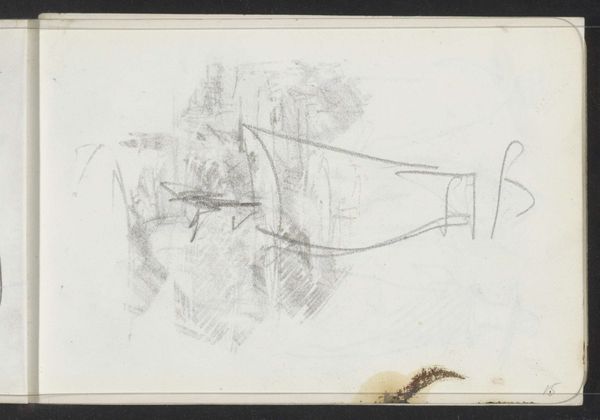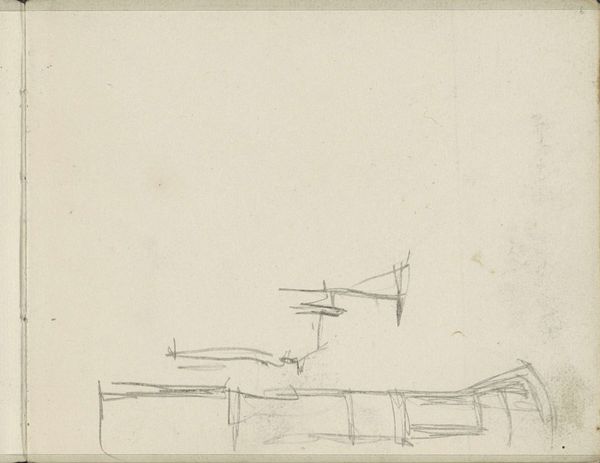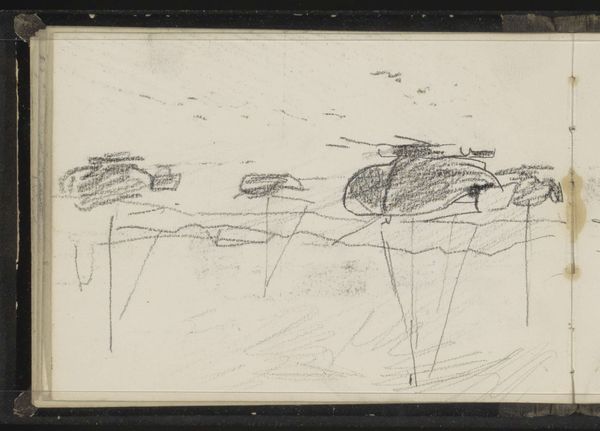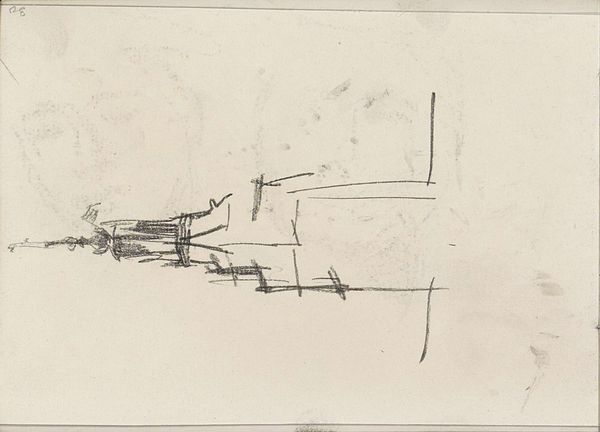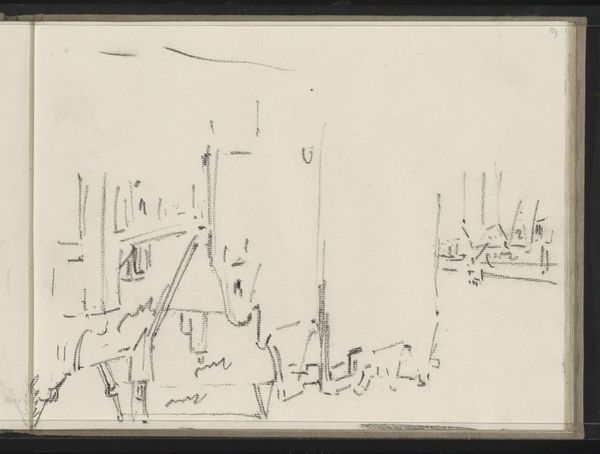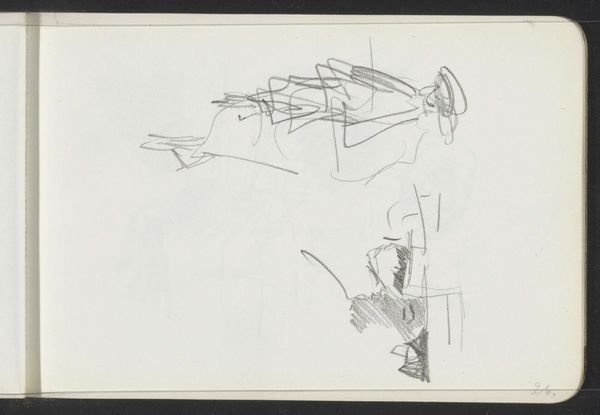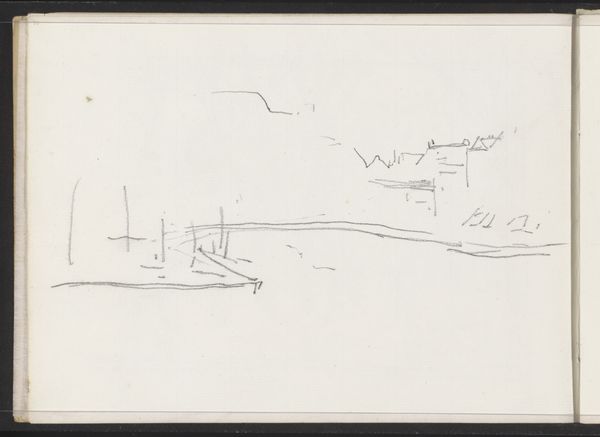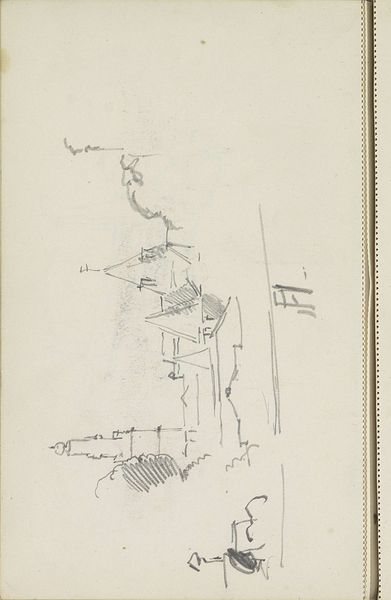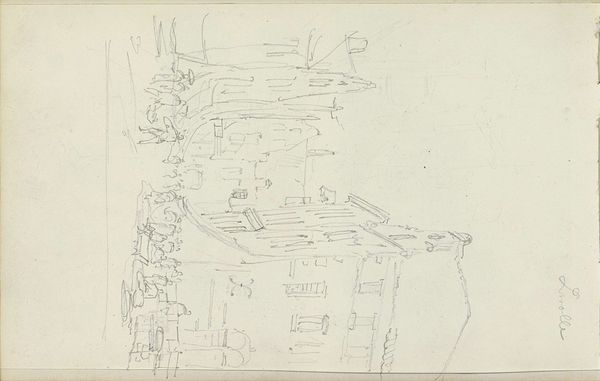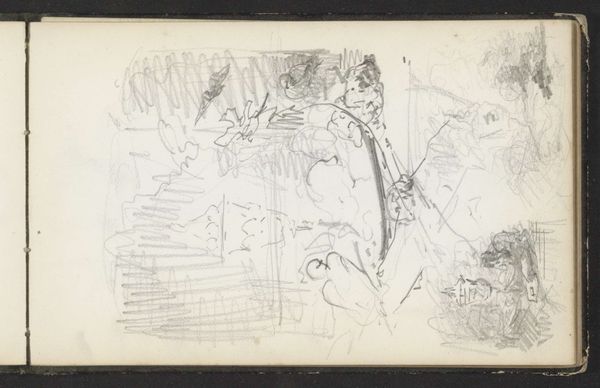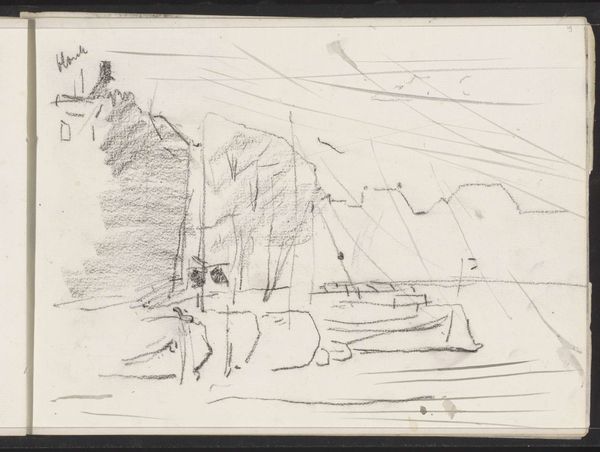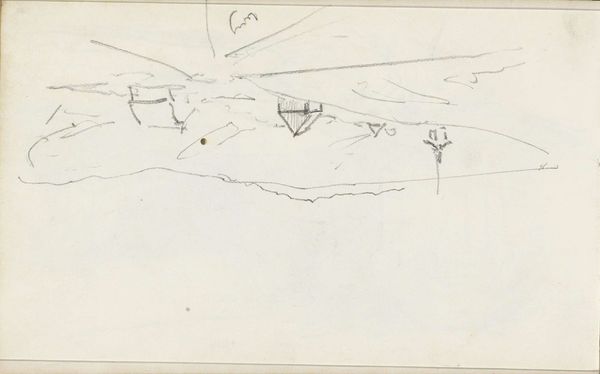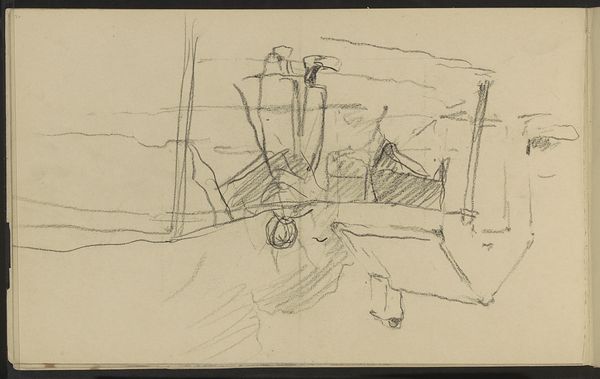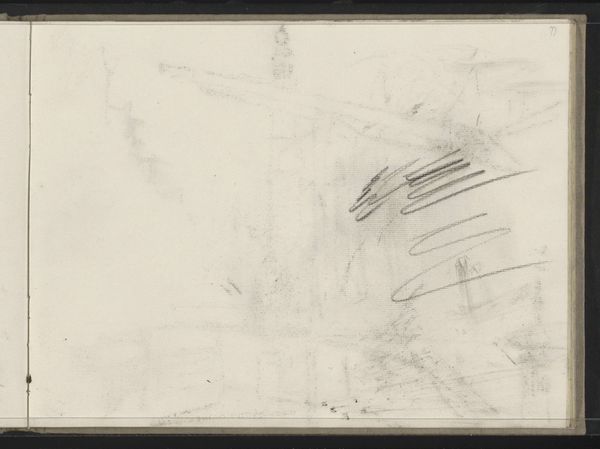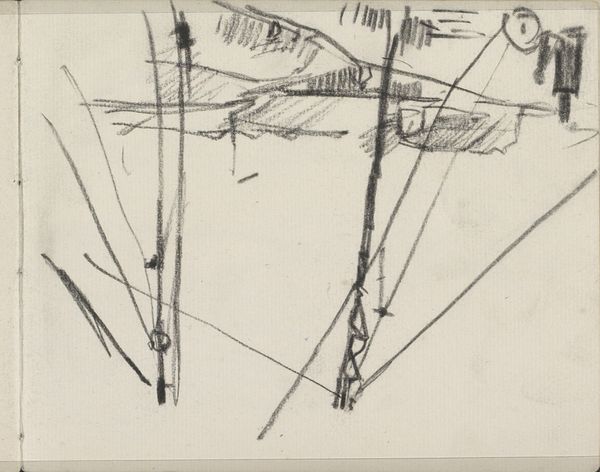
drawing, paper, pencil
drawing
landscape
paper
geometric
pencil
Copyright: Rijks Museum: Open Domain
Curator: Willem Witsen’s "Studieblad met metselverbanden en muurankers," dating from around 1897 to 1899 and residing here at the Rijksmuseum, is what we’re examining. Editor: Immediately, I’m struck by the rawness, the unrefined quality of the sketch. It feels so immediate, as if capturing a fleeting observation. Curator: Indeed, the loose strokes of the pencil define forms without fully delineating them. The geometric shapes interplay against the blank page, creating a tension between precision and ephemerality. Editor: For me, it is the deliberate focus on construction elements. He isn’t sketching a picturesque vista; he’s dissecting how buildings are literally held together, making tangible what often goes unnoticed. The wall anchors become decorative almost. Curator: Absolutely. Note the contrast between the organic scribbles and the precise depictions of the brickwork and anchors. It challenges the conventional notion of "landscape" to ask a broader question about spatial arrangements and our built environments. Editor: Yes, and if you consider what anchors do—they resist tension, distribute weight. In that context, I start thinking of the architect or builder making such decisions. What was the human effort here, the material process to give those forms function and permanence? It speaks of labor, choices, craft. Curator: It is true, the labor question is present but so too the formal construction: how these very different graphic renderings can share one page—in one space—with each mark being equally valued? The study is less an argument for functionality and more so an attempt at achieving balance. Editor: Still, the anchors here—beautiful as drawings, I grant you—feel like stand-ins. By documenting them so faithfully on paper, their functional essence, weight and very laboriousness, become a means unto an artistic end in themselves. Curator: Perhaps it highlights the essential difference between functional, utilitarian objects, and representational drawing as its own plane of importance? Editor: Possibly, or perhaps what this paper brings to light, through its formal language, is that these objects were carefully, skillfully considered at some moment during construction by more hands than simply that of an artist. Curator: This artwork is a successful balancing act of observation and documentation—a way of seeing architecture reduced down to component, formative aspects. Editor: Ultimately it's in recognizing those foundational blocks of effort where the real power exists, isn't it? To truly consider that material story in those basic shapes.
Comments
No comments
Be the first to comment and join the conversation on the ultimate creative platform.
